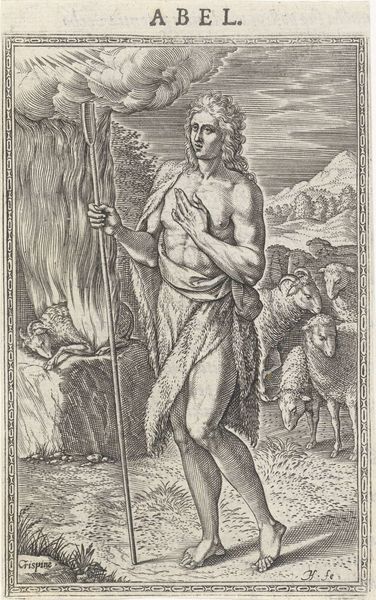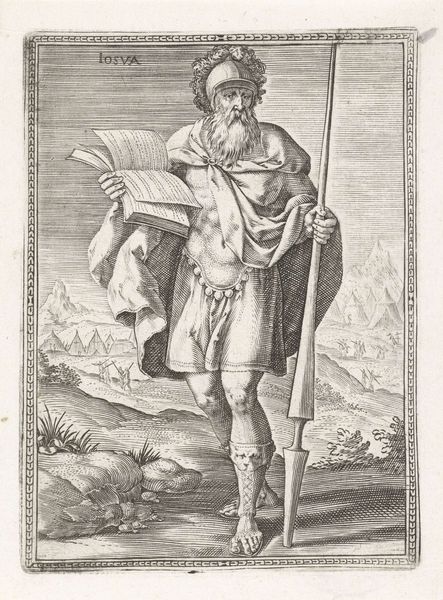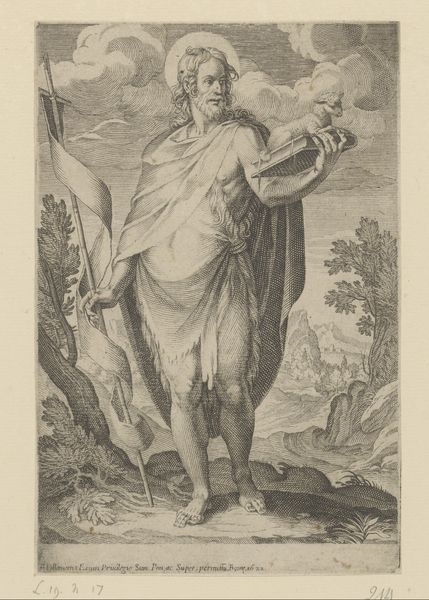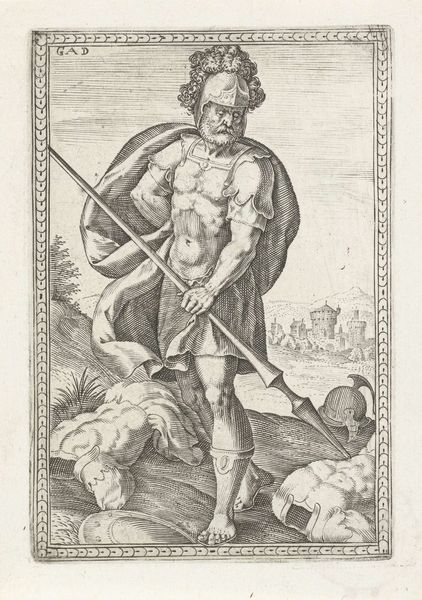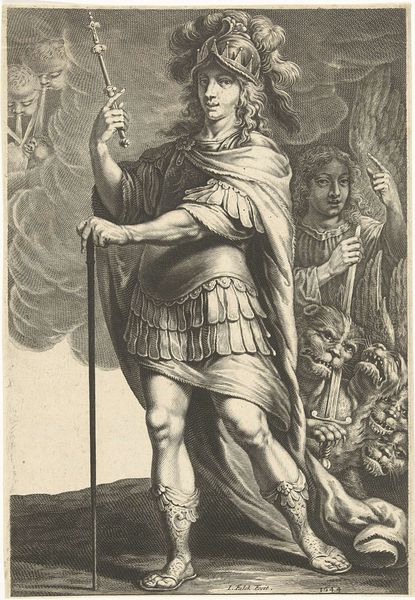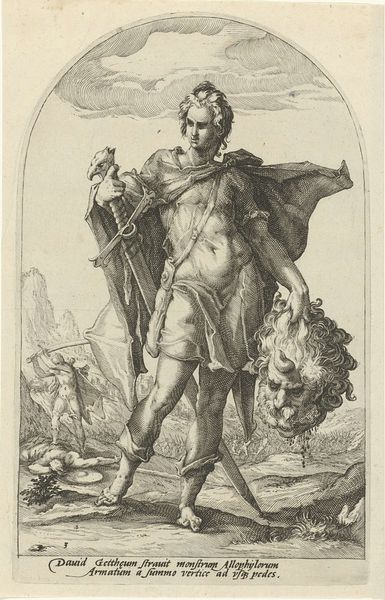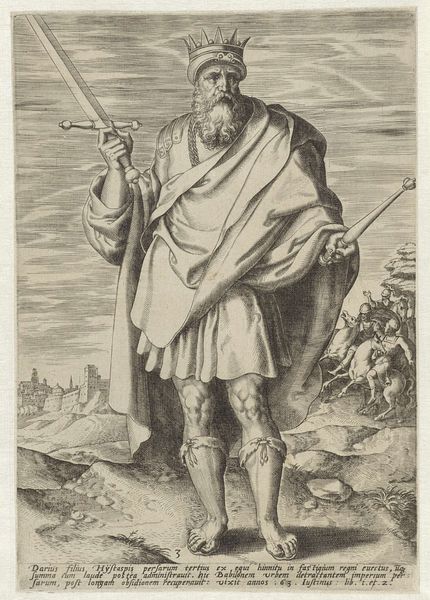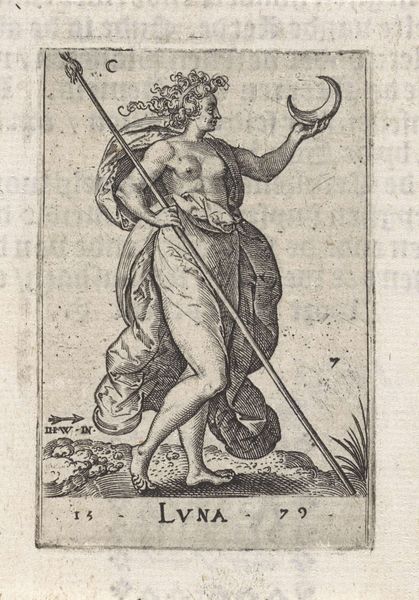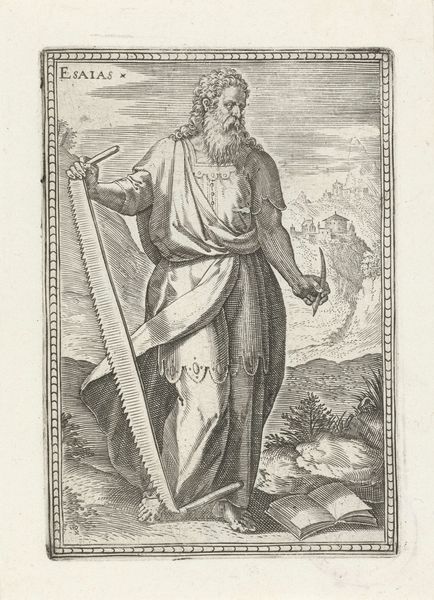
Dimensions: height 114 mm, width 76 mm
Copyright: Rijks Museum: Open Domain
Curator: Welcome. We’re standing before "Abel," a 1575 engraving by Johann Sadeler I, currently residing here at the Rijksmuseum. It depicts the biblical figure Abel. Editor: Immediately striking is the dramatic use of line and contrast. The artist's meticulous hatching and cross-hatching define form and texture, giving a remarkable sense of depth within this two-dimensional plane. The composition leads the eye upwards, from Abel's feet to the altar, enveloped in flames. Curator: This piece reflects the influence of the Baroque style, though adapted through the graphic conventions of printmaking, which allows for wide distribution and consumption of these biblical scenes beyond painting or sculpture. Consider how printmaking served the broader project of disseminating religious and historical narratives to a wider audience. Editor: Semiotically, Abel’s gesture – hand to chest – signifies piety, innocence, perhaps even acceptance of his fate. His gaze directed heavenward underscores this reading. It invites viewers to interpret his story not just as a historical event, but as a moral lesson. The contrast between Abel and the lambs grazing peacefully emphasizes his role as the sacrificial figure. Curator: Precisely. Think of the materiality involved in creating this image – the copperplate, the engraver’s tools, the paper, the ink. The repetitive, painstaking labor needed to create those fine lines would have required specialized skills acquired through years of apprenticeship and practice within a structured workshop setting. Each impression further reproduces and disseminates not just an image, but the ideology it conveys. Editor: True, and one cannot ignore the frame itself. It almost becomes another semiotic field adding visual codes to signify completion. The artwork seems carefully crafted. A kind of aesthetic closure achieved in miniature. Curator: This engraving serves as a potent reminder of the ways in which art—through careful manipulation of materials and visual language—helped construct and disseminate stories that continue to resonate through time. It highlights the intersection of artistic skill, economic systems, and the creation of collective meaning. Editor: I leave feeling strangely unsettled, but somehow convinced of the artist’s dedication. There’s something deeply sincere and perhaps a bit sorrowful etched into the final plate.
Comments
No comments
Be the first to comment and join the conversation on the ultimate creative platform.
